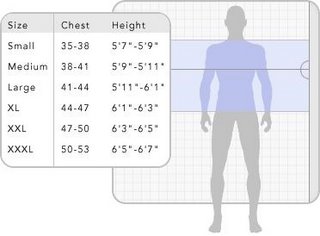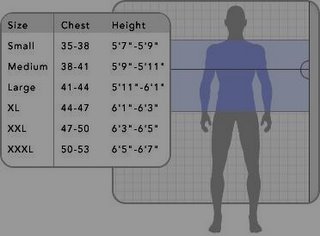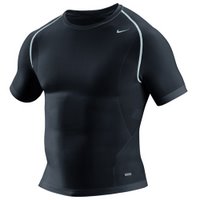
It looks like winter will finally arrive tomorrow, so I would like to share some tips for preparing your car for winter. I actually started prepping my car the beginning of November. You should actually start earlier so if you need to spend money, you can spread the expense over a couple of months. Winter weather always hits Butler County harder than Allegheny County. Here is a list of things I have done:
1. I live in Allegheny County, so I needed an emissions test in addition to the Pennsylvania State Vehicle Inspection. This was due the end of November, but I completed this the beginning of November.
2. Inspect/Replace wiper blades - the wiper blades were replaced during my PA state vehicle inspection
3. Have the charge on your battery checked. There are two places that can check your battery for free: Autozone and Advance Auto Parts. If the battery tests OK, check/clean the battery terminals with a solution of baking soda and water. Here are instructions for cleaning the battery terminals:
A. Identify the terminals. One has a + (positive) symbol on or near it and one has a - (negative) symbol. The cable on one of these two terminals is attached to the engine (ground terminal, usually the negative terminal) and the other goes to the starter.
B. Remove the plastic terminal caps, if there are any, and carefully brush away any white powder (corrosion). If the battery cables attach to the battery with a nut, remove the nut and clean the terminal and cable with a wire brush, and then skip to step 6. If the battery uses terminal posts, follow steps C through E.
C. Use a wrench to loosen the bolts at the end of the battery cable where it wraps around the ground terminal. Carefully wiggle the cable end up and down until it comes off the terminal; if the end doesn't come off the terminal easily, buy and use a battery terminal puller from the parts store. Then loosen and remove the cable on the other terminal.
D. Place the end of the terminal-cleaning tool over each terminal and rotate it a few times. The wire brush inside the tool will clean the terminal post.
E. Twist and open the terminal-cleaning tool to expose the round wire brush inside. Insert this brush into the cable ends and rotate the tool to clean the inside of the ends. If the cable ends are broken or the wire is frayed, replace the cable with one of the same length.
F. Use an old paint brush to dust away dirt and corrosion from the top and sides of the battery. Make sure the debris doesn't fall on other components or on the car's paint. If the battery is very dirty, remove it from the car and carefully clean it with a solution of a pint of water and a teaspoon of baking soda. Just make sure the solution doesn't get inside the battery. Rinse off the baking soda solution with water. Smear a little petroleum jelly onto the terminal before fastening the cable clamps to the posts. The grease will help slow corrosion.
G. Reattach the terminal cables
4. Tires - check the tread depth and replace if necessary. The following was information was found on http://www.tirerack.com/:
U.S. coins can be substituted for a tire tread depth gauge as tires wear to the critical final few 32nds of an inch of their remaining tread depth.
Place a penny upside down into several tread grooves across the tire. If part of Lincoln's head is always covered by the tread, you have more than 2/32" of tread depth remaining.
Place a quarter upside down into several tread grooves across the tire. If part of Washington's head is always covered by the tread, you have more than 4/32" of tread depth remaining.
Place a penny upside down into several tread grooves across the tire. If the top of the Lincoln Memorial is always covered by the tread, you have more than 6/32" of tread depth remaining.
The Law
According to most states' laws, tires are legally worn out when they have worn down to 2/32" of remaining tread depth. To help warn drivers that their tires have reached that point, tires sold in North America are required to have indicators molded into their tread design called "wear bars" which run across their tread pattern from their outside shoulder to inside shoulder. Wear bars are designed to visually connect the elements of the tire's tread pattern and warn drivers when their tires no longer meet minimum tread depth requirements.
Common Sense
However, as a tire wears it's important to realize that the tire's ability to perform in rain and snow will be reduced. With 2/32" of remaining tread depth, resistance to hydroplaning in the rain at highway speeds has been significantly reduced, and traction in snow has been virtually eliminated.
If rain and wet roads are a concern, you should consider replacing your tires when they reach approximately 4/32" of remaining tread depth. Since water can't be compressed, you need enough tread depth to allow rain to escape through the tire's grooves. If the water can't escape fast enough, your vehicle's tires will be forced to hydroplane (float) on top of the water, losing traction.
If snow covered roads are a concern, you should consider replacing your tires when they reach approximately 6/32" of remaining tread depth to maintain good mobility. You need more tread depth in snow because your tires need to compress the snow in their grooves and release it as the they roll. If there isn't sufficient tread depth, the "bites" of snow your tires can take on each revolution will be reduced to "nibbles," and your vehicle's traction and mobility will be sacrificed. Because tread depth is such an important element for snow traction, winter tires usually start with noticeably deeper tread depths than typical All-Season or summer tires. Some winter tires even have a second series of "wear bars" molded in their tread pattern indicating approximately 6/32" remaining tread depth to warn you when your tires no longer meet the desired tread depth.
5. Find all the winter stuff for your car that you packed away. This could be booster cables, windshield washer fluid, ice scraper, snow brush, portable shovel, blanket, cat litter or sand (for traction).
6. Before the weather gets too cold wash your car and apply a good coat of car wax. Removing snow and ice from your car is much easier if your car has a coat of car wax on it. The snow and ice will literally slide off the waxed surface. Also clean both the outside and inside of all windows. People forget to clean the inside of the windows. It does make a big difference. Also clean your headlights, tail lights, etc. While you are at it, you might as well vacuum the inside of your car.
7. If the floors inside your car are covered with carpet, buy some cheap rubber or plastic carpet mats for winter. You can also buy a roll of plastic carpet runner and cut it to fit the floor of your car. The mats will keep the salt off your interior carpet and keep the carpet from getting wet when you track snow into your car.
8. Renew or buy a AAA membership. If you run out of gas, have a dead battery, get a flat tire, or need a tow, a AAA membership can really help.
1. I live in Allegheny County, so I needed an emissions test in addition to the Pennsylvania State Vehicle Inspection. This was due the end of November, but I completed this the beginning of November.
2. Inspect/Replace wiper blades - the wiper blades were replaced during my PA state vehicle inspection
3. Have the charge on your battery checked. There are two places that can check your battery for free: Autozone and Advance Auto Parts. If the battery tests OK, check/clean the battery terminals with a solution of baking soda and water. Here are instructions for cleaning the battery terminals:
A. Identify the terminals. One has a + (positive) symbol on or near it and one has a - (negative) symbol. The cable on one of these two terminals is attached to the engine (ground terminal, usually the negative terminal) and the other goes to the starter.
B. Remove the plastic terminal caps, if there are any, and carefully brush away any white powder (corrosion). If the battery cables attach to the battery with a nut, remove the nut and clean the terminal and cable with a wire brush, and then skip to step 6. If the battery uses terminal posts, follow steps C through E.
C. Use a wrench to loosen the bolts at the end of the battery cable where it wraps around the ground terminal. Carefully wiggle the cable end up and down until it comes off the terminal; if the end doesn't come off the terminal easily, buy and use a battery terminal puller from the parts store. Then loosen and remove the cable on the other terminal.
D. Place the end of the terminal-cleaning tool over each terminal and rotate it a few times. The wire brush inside the tool will clean the terminal post.
E. Twist and open the terminal-cleaning tool to expose the round wire brush inside. Insert this brush into the cable ends and rotate the tool to clean the inside of the ends. If the cable ends are broken or the wire is frayed, replace the cable with one of the same length.
F. Use an old paint brush to dust away dirt and corrosion from the top and sides of the battery. Make sure the debris doesn't fall on other components or on the car's paint. If the battery is very dirty, remove it from the car and carefully clean it with a solution of a pint of water and a teaspoon of baking soda. Just make sure the solution doesn't get inside the battery. Rinse off the baking soda solution with water. Smear a little petroleum jelly onto the terminal before fastening the cable clamps to the posts. The grease will help slow corrosion.
G. Reattach the terminal cables
4. Tires - check the tread depth and replace if necessary. The following was information was found on http://www.tirerack.com/:
U.S. coins can be substituted for a tire tread depth gauge as tires wear to the critical final few 32nds of an inch of their remaining tread depth.
Place a penny upside down into several tread grooves across the tire. If part of Lincoln's head is always covered by the tread, you have more than 2/32" of tread depth remaining.
Place a quarter upside down into several tread grooves across the tire. If part of Washington's head is always covered by the tread, you have more than 4/32" of tread depth remaining.
Place a penny upside down into several tread grooves across the tire. If the top of the Lincoln Memorial is always covered by the tread, you have more than 6/32" of tread depth remaining.
The Law
According to most states' laws, tires are legally worn out when they have worn down to 2/32" of remaining tread depth. To help warn drivers that their tires have reached that point, tires sold in North America are required to have indicators molded into their tread design called "wear bars" which run across their tread pattern from their outside shoulder to inside shoulder. Wear bars are designed to visually connect the elements of the tire's tread pattern and warn drivers when their tires no longer meet minimum tread depth requirements.
Common Sense
However, as a tire wears it's important to realize that the tire's ability to perform in rain and snow will be reduced. With 2/32" of remaining tread depth, resistance to hydroplaning in the rain at highway speeds has been significantly reduced, and traction in snow has been virtually eliminated.
If rain and wet roads are a concern, you should consider replacing your tires when they reach approximately 4/32" of remaining tread depth. Since water can't be compressed, you need enough tread depth to allow rain to escape through the tire's grooves. If the water can't escape fast enough, your vehicle's tires will be forced to hydroplane (float) on top of the water, losing traction.
If snow covered roads are a concern, you should consider replacing your tires when they reach approximately 6/32" of remaining tread depth to maintain good mobility. You need more tread depth in snow because your tires need to compress the snow in their grooves and release it as the they roll. If there isn't sufficient tread depth, the "bites" of snow your tires can take on each revolution will be reduced to "nibbles," and your vehicle's traction and mobility will be sacrificed. Because tread depth is such an important element for snow traction, winter tires usually start with noticeably deeper tread depths than typical All-Season or summer tires. Some winter tires even have a second series of "wear bars" molded in their tread pattern indicating approximately 6/32" remaining tread depth to warn you when your tires no longer meet the desired tread depth.
5. Find all the winter stuff for your car that you packed away. This could be booster cables, windshield washer fluid, ice scraper, snow brush, portable shovel, blanket, cat litter or sand (for traction).
6. Before the weather gets too cold wash your car and apply a good coat of car wax. Removing snow and ice from your car is much easier if your car has a coat of car wax on it. The snow and ice will literally slide off the waxed surface. Also clean both the outside and inside of all windows. People forget to clean the inside of the windows. It does make a big difference. Also clean your headlights, tail lights, etc. While you are at it, you might as well vacuum the inside of your car.
7. If the floors inside your car are covered with carpet, buy some cheap rubber or plastic carpet mats for winter. You can also buy a roll of plastic carpet runner and cut it to fit the floor of your car. The mats will keep the salt off your interior carpet and keep the carpet from getting wet when you track snow into your car.
8. Renew or buy a AAA membership. If you run out of gas, have a dead battery, get a flat tire, or need a tow, a AAA membership can really help.









 Penguins radio broadcaster Mike Lange referred to anyone listening to the 10:30PM start of the Penguins game as belonging to the "Nightowl Club". I listened to the entire game on
Penguins radio broadcaster Mike Lange referred to anyone listening to the 10:30PM start of the Penguins game as belonging to the "Nightowl Club". I listened to the entire game on